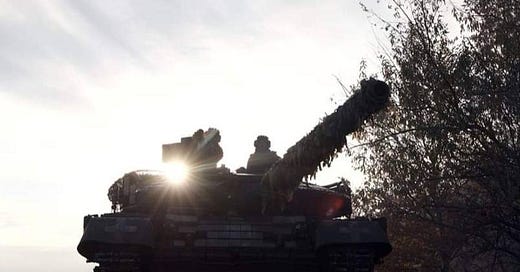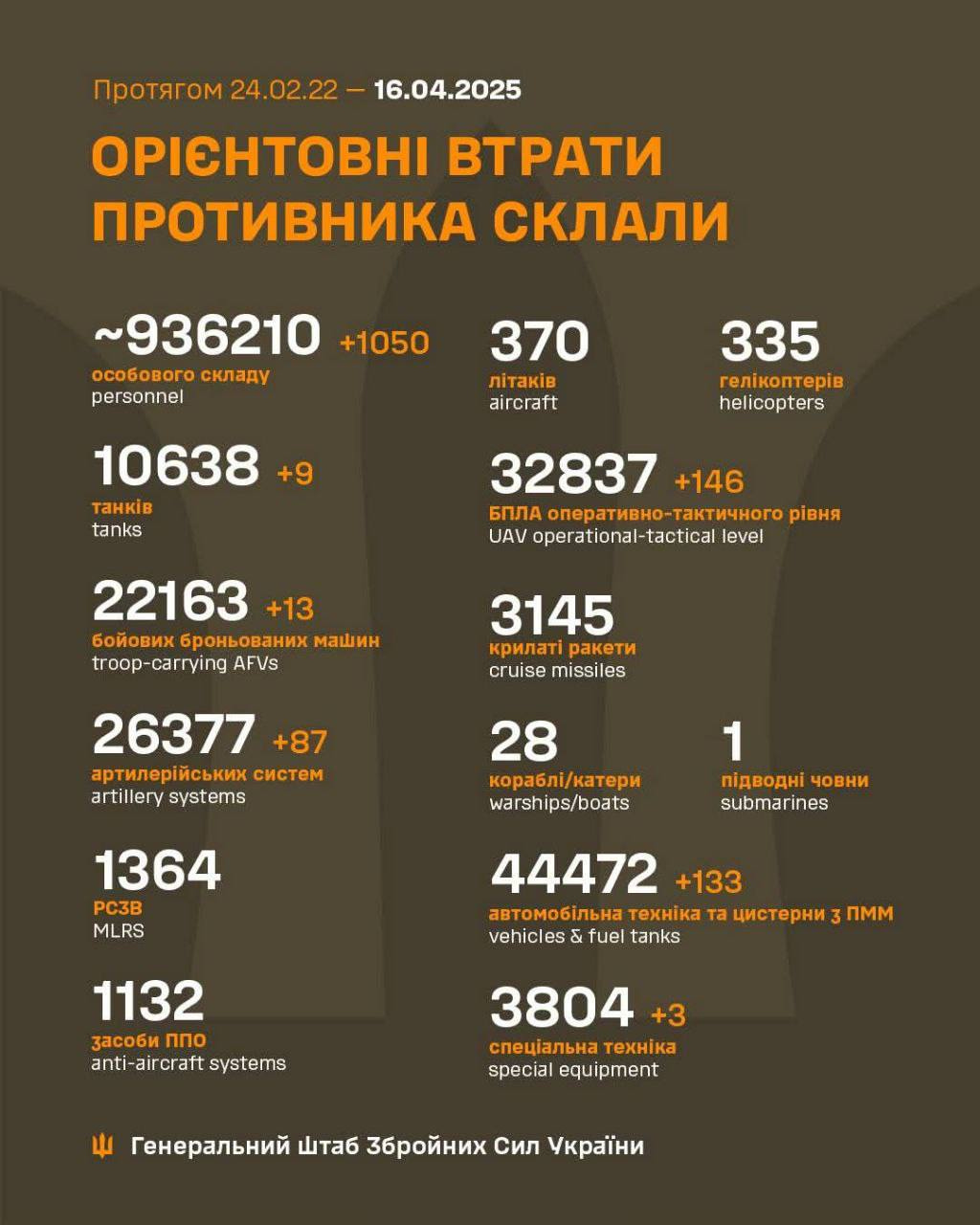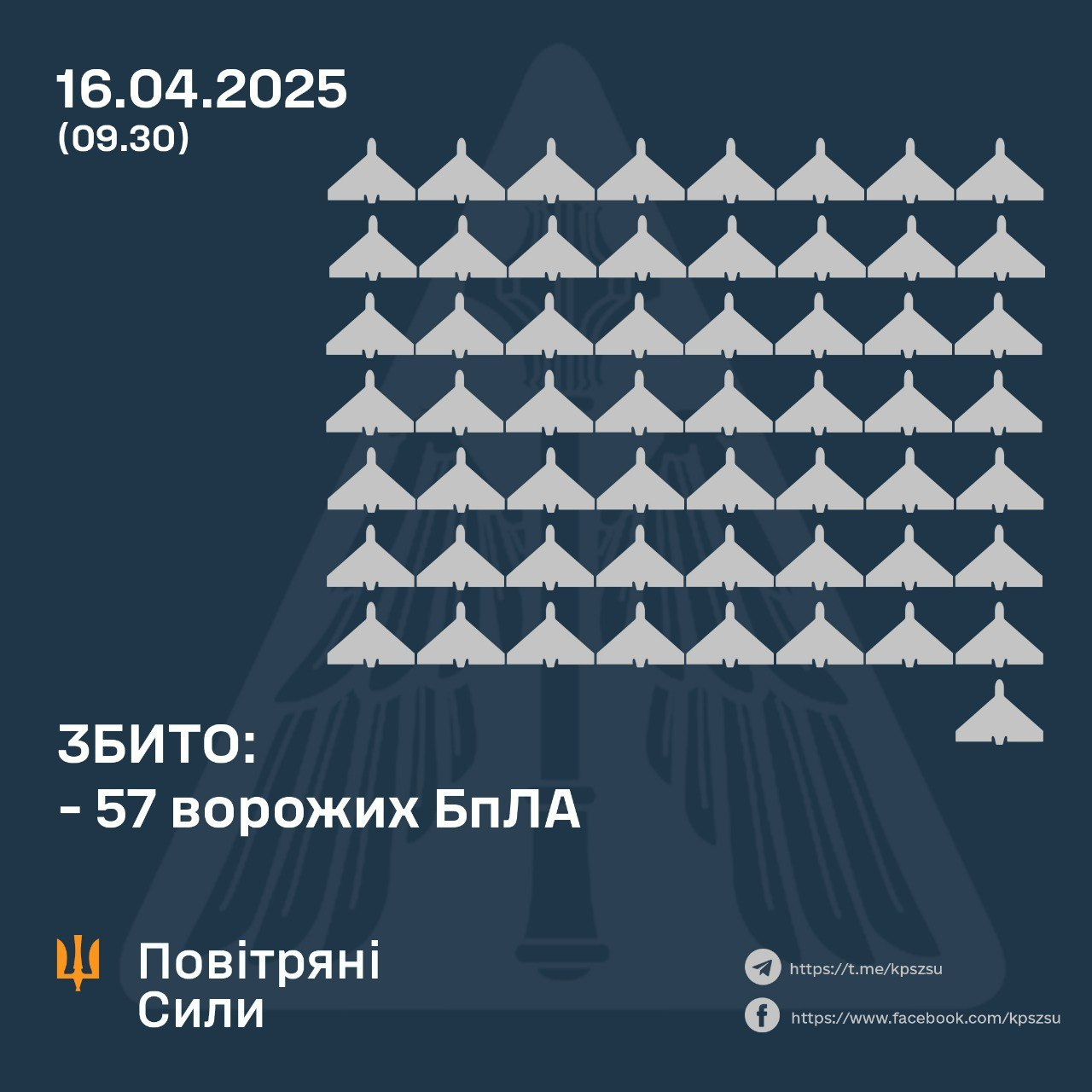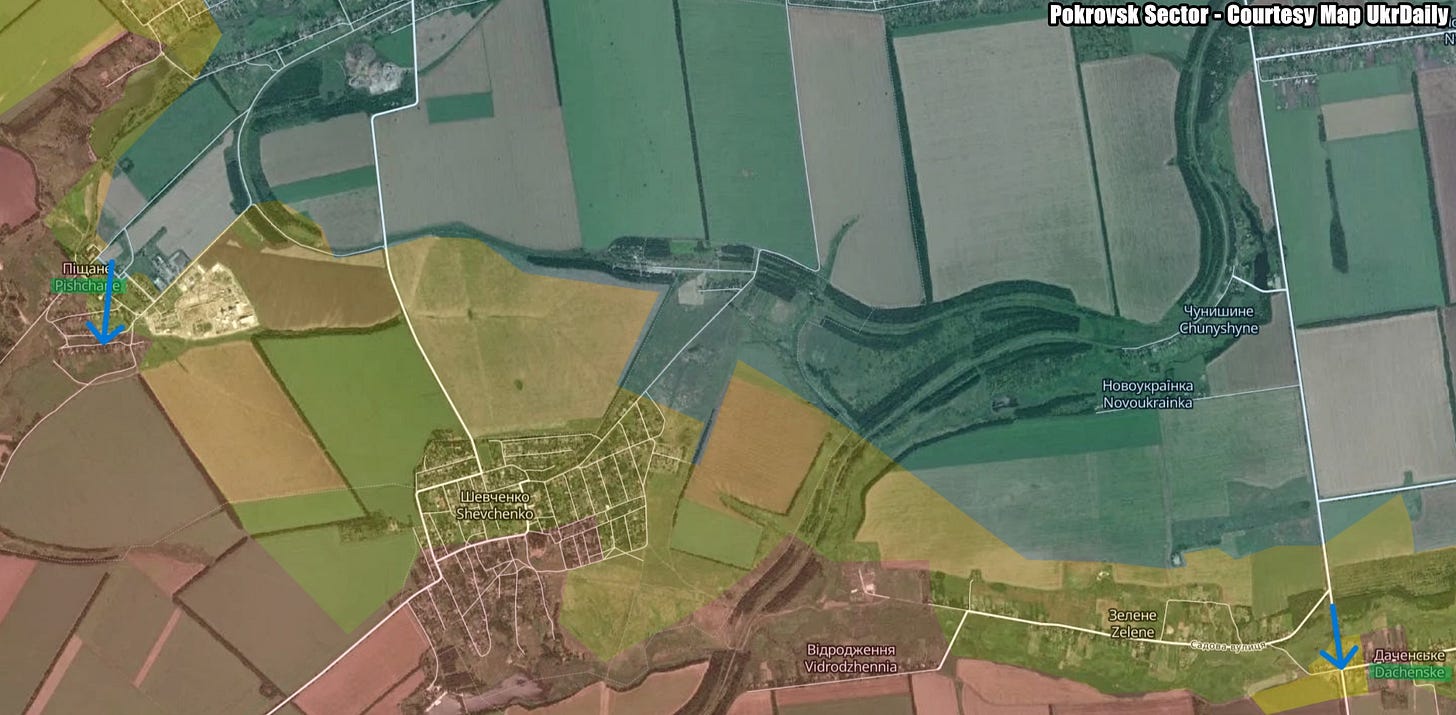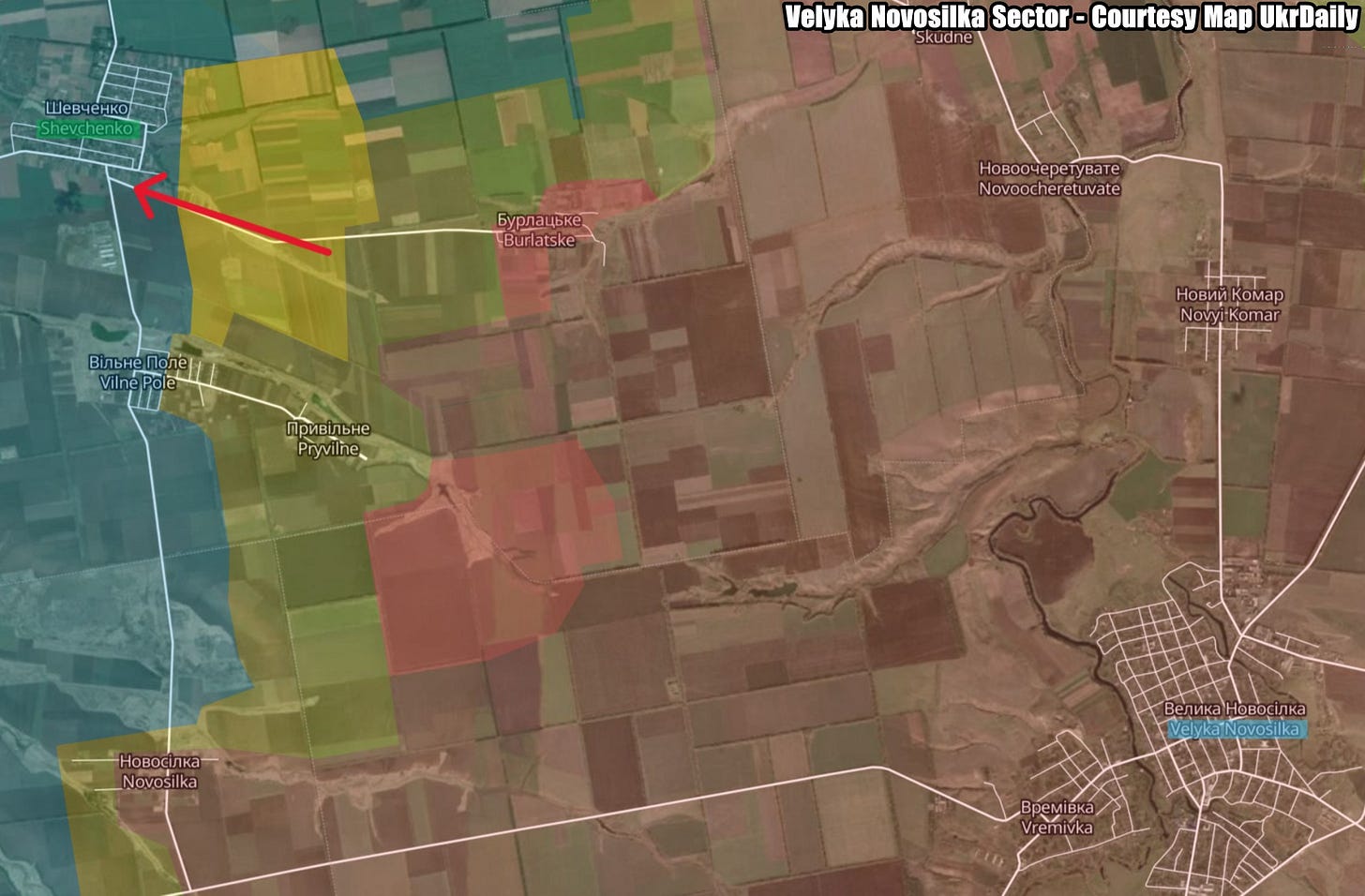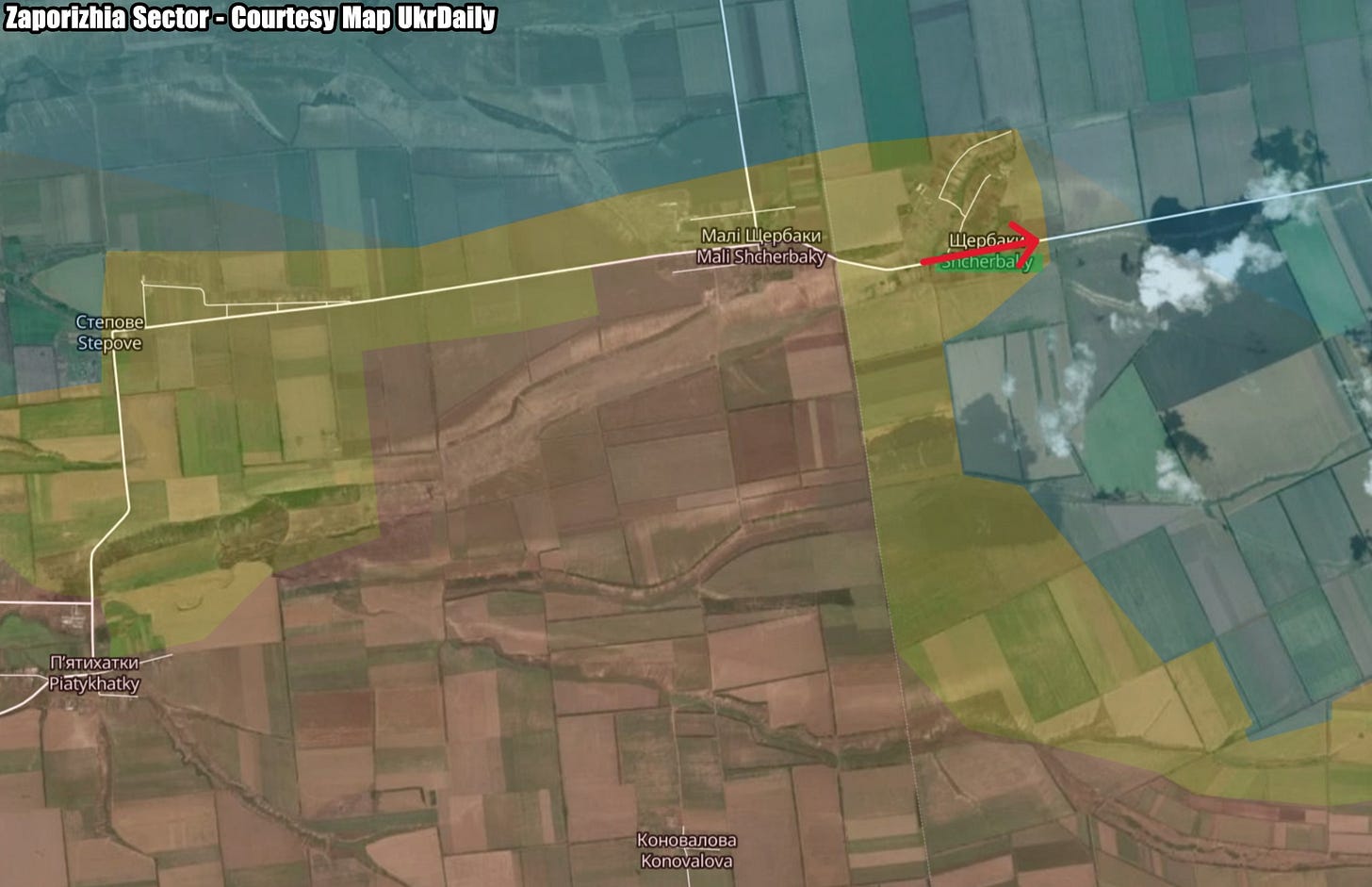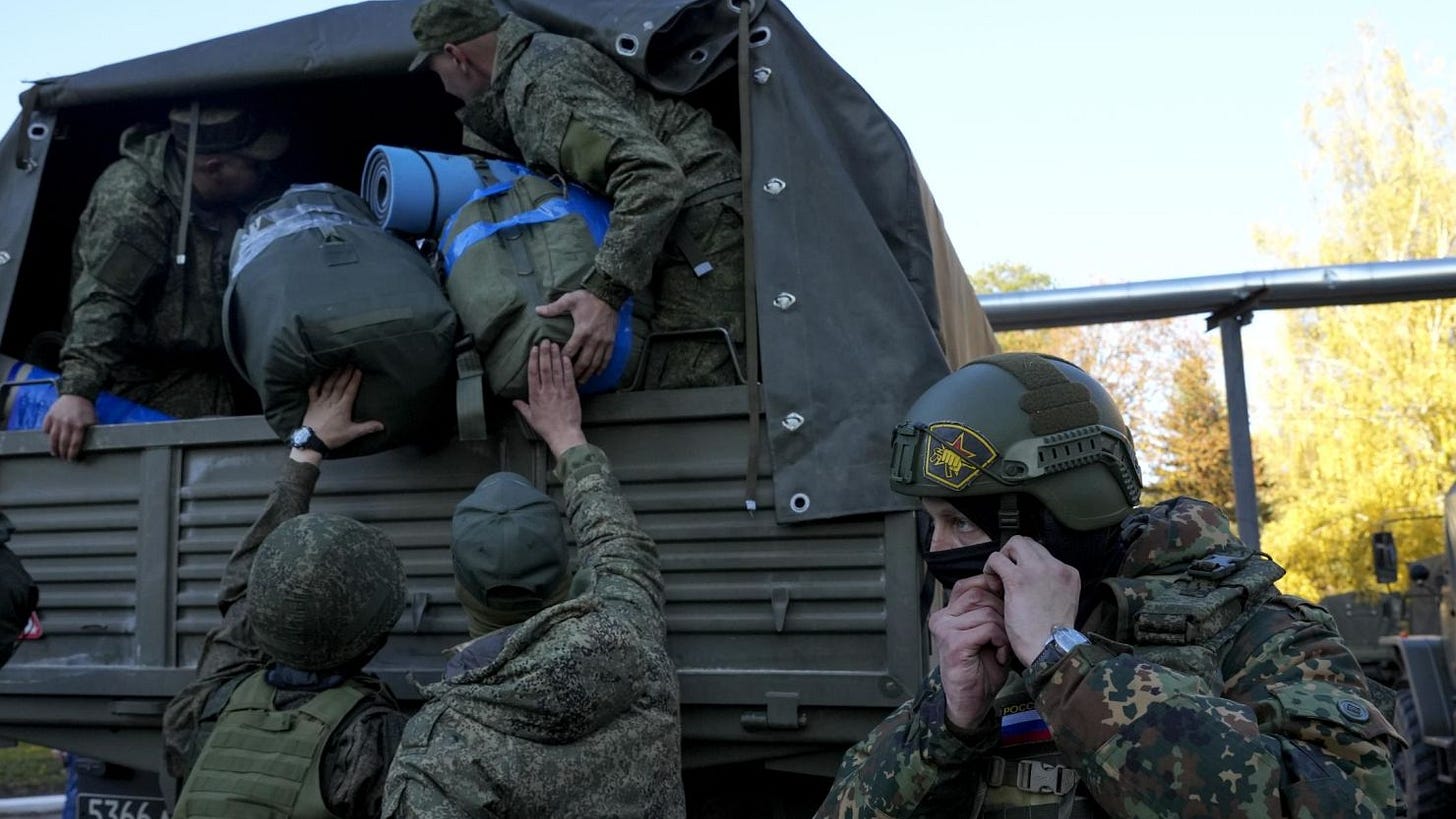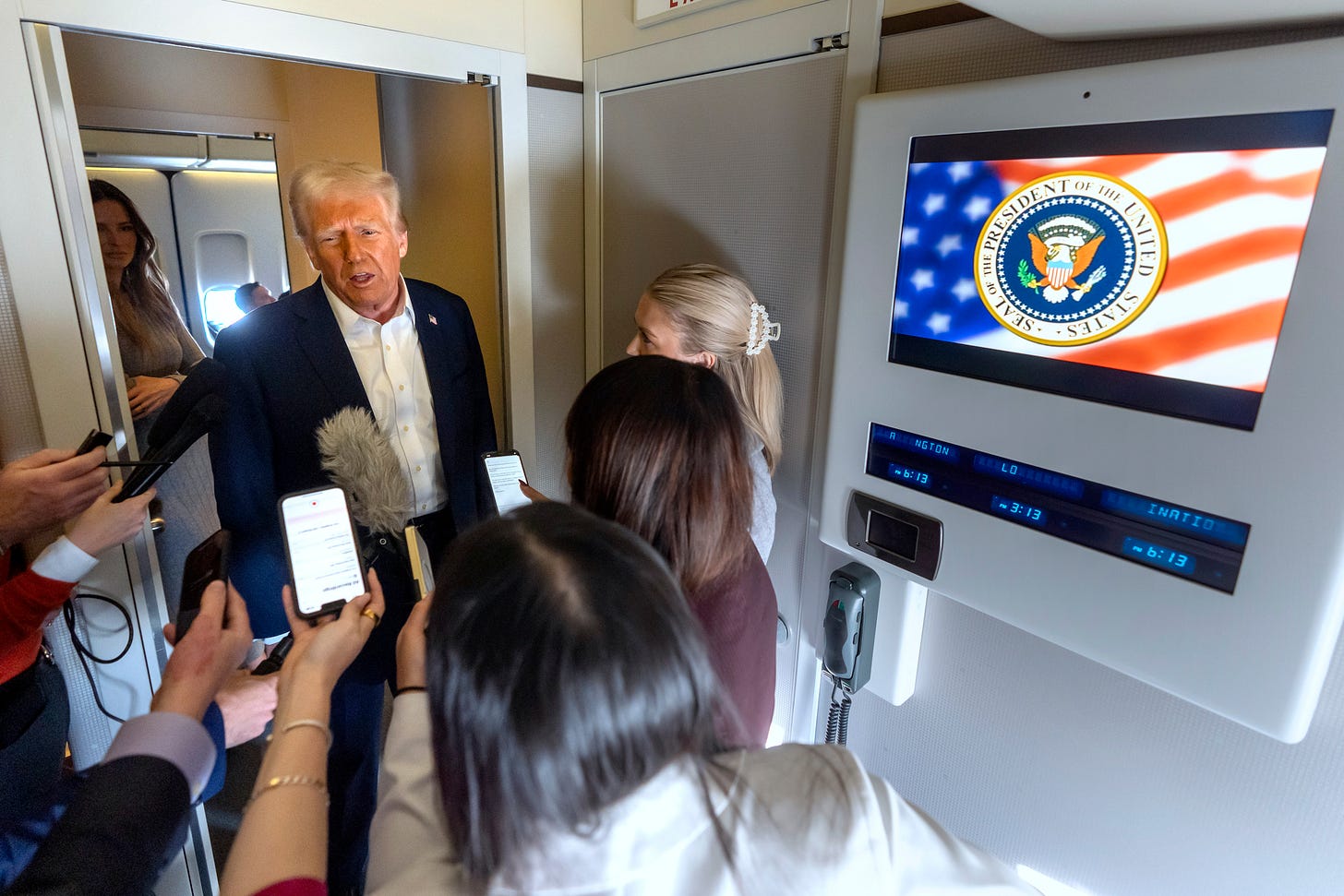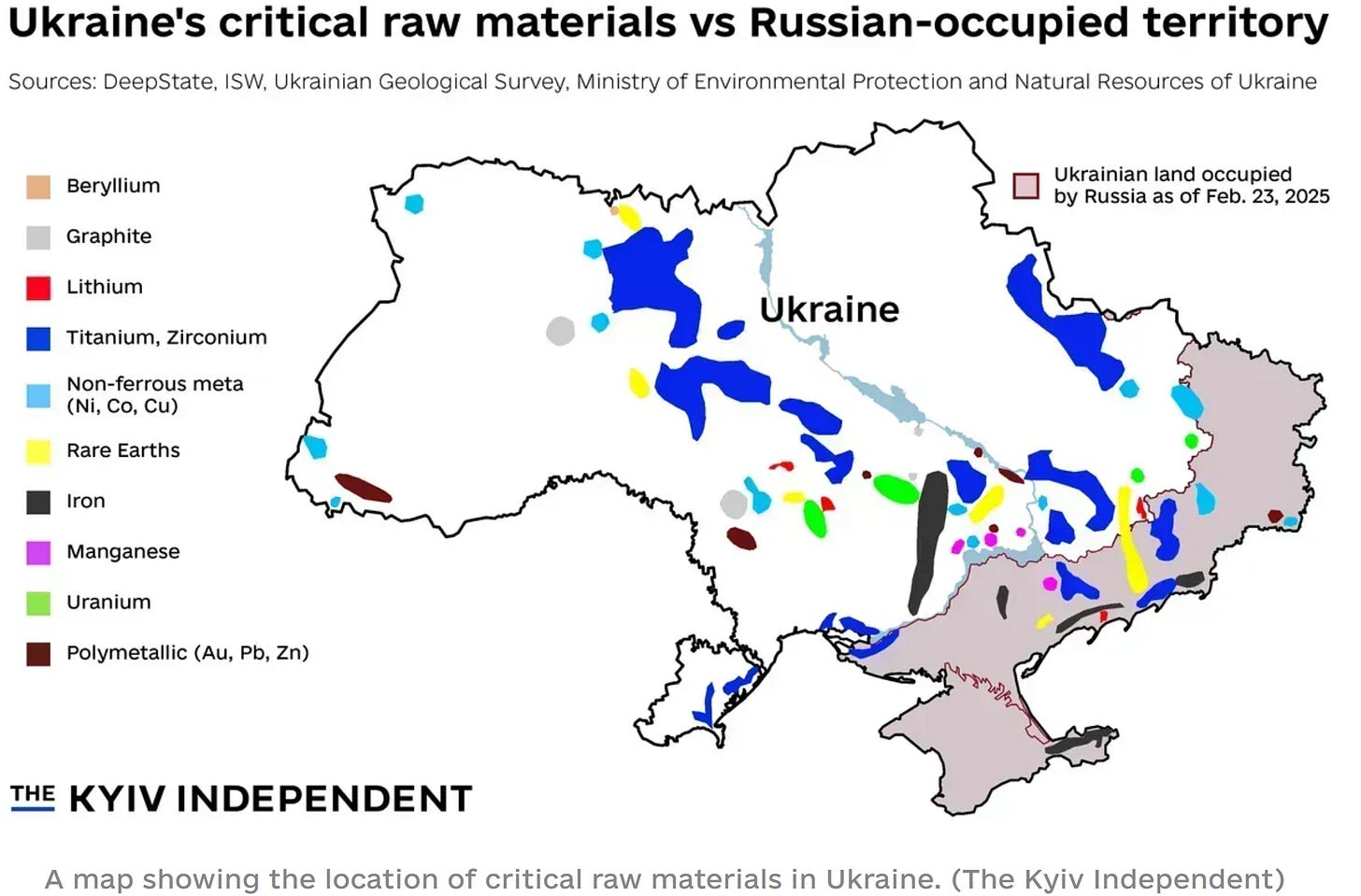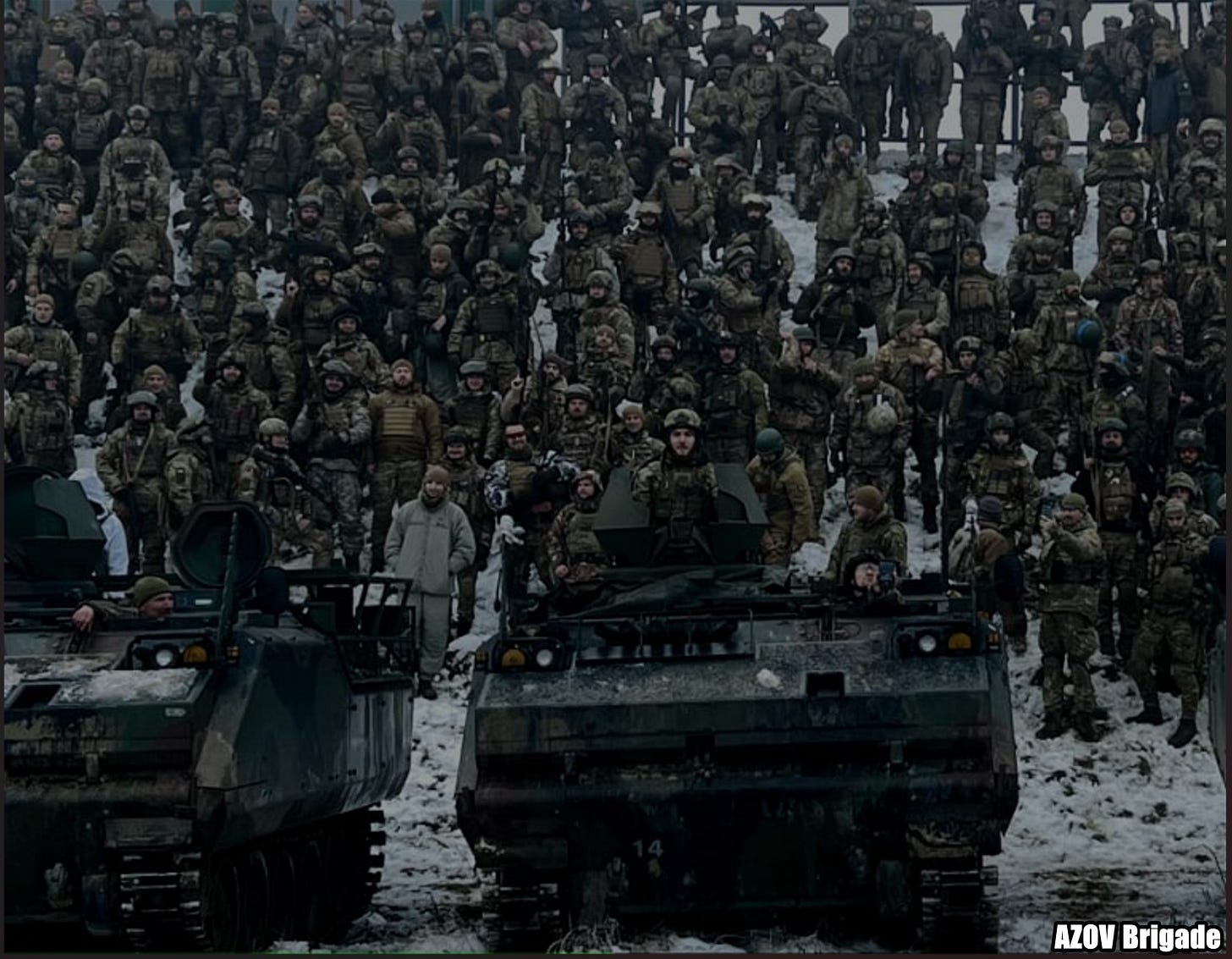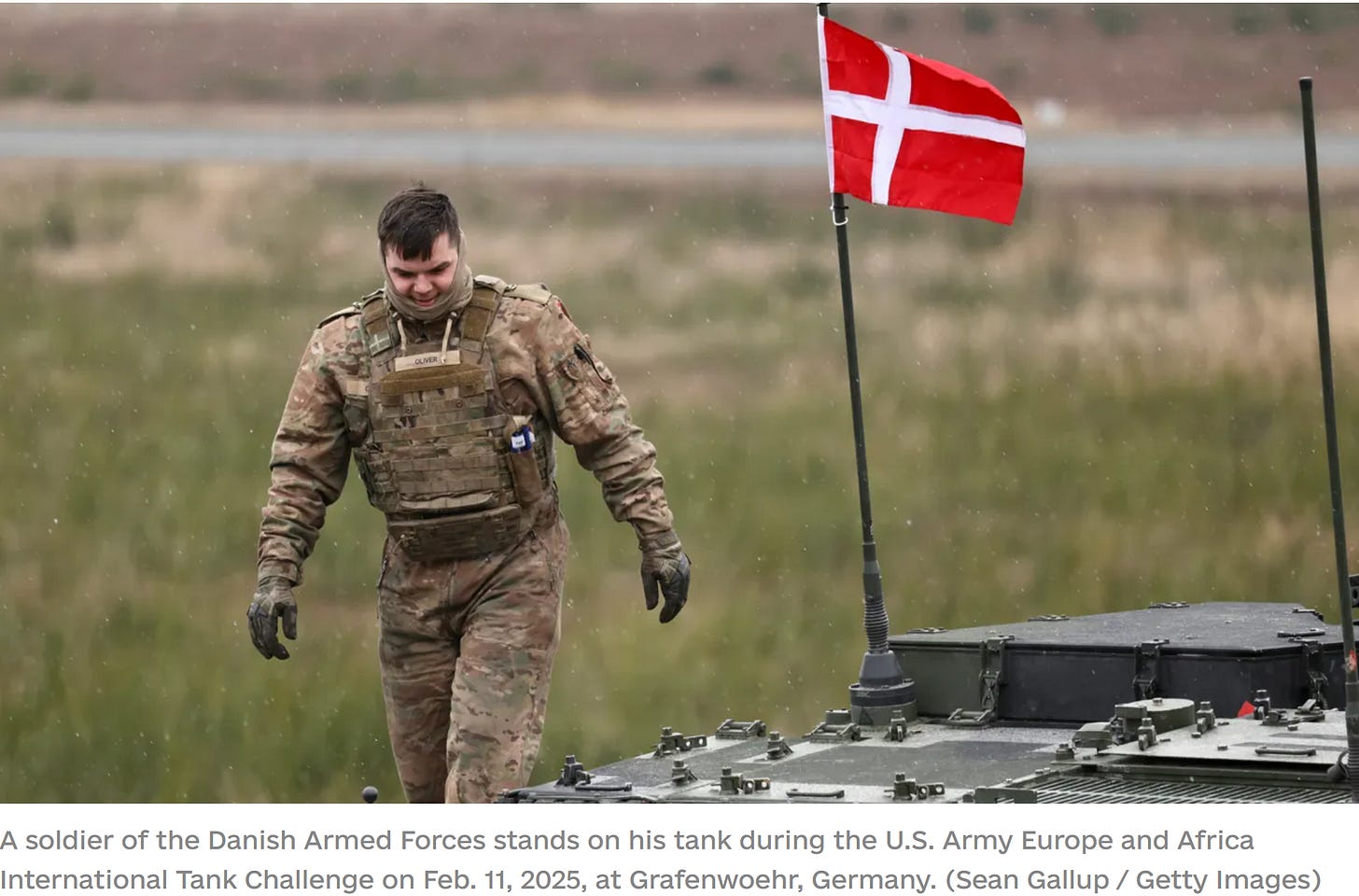Slava Ukraini! In early 2022 I began a Telegram channel aggregating news from a number of sources daily on the war in Ukraine. In June 2023 I began providing a daily draft for the Ukraine War Brief Podcast collecting news from over 70 sources daily, which formed the basis of the script. While the Podcast no longer exists I have continued to make this Brief available for my followers here on Substack for those who wish to keep up with the news from the war.
All the latest news on the Russo-Ukraine War 6 days per week
ALONG THE CONTACT LINE
GSAFU Morning Report
For: Apr 16, 2025
The General Staff of the Armed Forces of Ukraine in its Operational Information update at 08:00 on Apr 16 stated that day 1148 of the full-scale invasion of the Russian Federation against Ukraine had begun.
The situation on the line of combat remains tense in some sectors. Ukrainian defenders continue to actively counteract the Russian aggressor, causing them significant losses in personnel, equipment and technology. Exhausting the enemy along the entire front line and continuing to disrupt the plans of Russian occupiers to advance deeper into the territory of Ukraine.
During the past day, 111 combat engagements took place.
Over the past 24 hours, the enemy carried out 109 air strikes, used 2,923 drones and fired approximately 6,600 artillery shells across the positions of Ukrainian forces and civilians.
Air Force Daily Report
57 ENEMY UAVS SHOT DOWN, 34 SIMULATOR UAVS FAILED TO REACH THEIR TARGETS (LOCATIONALLY LOST)
➖➖➖➖➖➖➖➖➖
On the night of April 16 (from 8:30 p.m. on April 15), the enemy attacked with 97 Shahed attack UAVs and simulator drones of various types from the directions: Kursk, Bryansk, Millerovo, Primorsko-Akhtarsk - Russia, and Chauda - Crimea.
The air attack was repelled by aviation, anti-aircraft missile troops, electronic warfare units, and mobile fire groups of the Defense Forces of Ukraine.
As of 9:30, the shooting down of 57 Shahed attack UAVs (and other types of drones) in the east, north, center, and south of the country has been confirmed.
34 enemy drones-simulators - lost in location (without negative consequences).
As a result of the enemy attack, the Sumy, Odessa, Dnipropetrovsk, Kyiv, and Poltava regions suffered.
Combat Operations in the Russian Federation
The Institute for the Study of War (ISW), a US based think tank, in its Apr 15 Russian Offensive Campaign Assessment reported that:
Belgorod Incursion: Fighting continued in northwesternmost Belgorod Oblast on Apr 15, but Russian forces did not make confirmed advances.
The Khortytsia operational-strategic group
(Responsible for the northeastern part of Ukraine. )
Sumy Sector: Russian forces continued offensive operations in the Sumy direction on Apr 14 but did not make confirmed advances.
Toretsk Sector: Ukrainian forces recently advanced in northwestern Toretsk.
Assessed Ukrainian advances: Geolocated footage published on Apr 15 indicates that Ukrainian forces recently marginally advanced in northwestern Toretsk.
The Tavria operational-strategic group
(Responsible for the central-eastern and southeastern part of Ukraine.)
Pokrovsk Sector : Ukrainian forces recently advanced in the Pokrovsk direction.
Geolocated footage published on Apr 14 and 15 indicates that Ukrainian forces recently advanced in western Dachenske (southwest of Pokrovsk) and the industrial zone in eastern Pishchane (southeast of Pokrovsk).
Velyka Novosilka Sector: Russian forces recently advanced roughly 800 meters in the Velyka Novosilka direction during a large-scale mechanized assault.
Geolocated footage published on Apr 14 shows Ukrainian forces striking Russian armored vehicles east of Shevchenko (northwest of Velyka Novosilka), indicating that Russian forces recently advanced in the area.
A Ukrainian source reportedly affiliated with Ukrainian military intelligence reported on Apr 14 that Russian forces conducted an at least reinforced company-sized mechanized assault consisting of at least 20 armored vehicles and 41 motorcycles toward Shevchenko on Apr 13. The Ukrainian source noted that a Russian tank drove to the outskirts of Shevchenko but that the tank "blew up." The large-scale Russian mechanized assault notably only advanced roughly 800 meters across open fields and a small water feature.
Zaporizhia Sector: Russian forces recently advanced in western Zaporizhia Oblast.
Geolocated footage published on Apr 14 indicates that Russian forces recently advanced along the T-0812 Orikhiv-Zaporizhzhia City highway east of Shcherbaky (southwest of Orikhiv).
The Odesa operational-strategic group
(Responsible for Kherson, Qırım, (also known as Crimea) and the Black Sea.)
There have been no major changes to the combat environment since our last report.
TEMPORARILY OCCUPIED TERRITORIES
Nothing major to report.
THE HOME FRONT
1 killed, 27 injured in Russian attacks across Ukraine over past day.
Russian attacks across Ukrainian regions killed at least one civilian and injured at least 27 over the past day, the Kyiv Independent reported citing regional authorities on April 16.
Two men, aged 39 and 48, were injured during overnight attacks against Dnipropetrovsk Oblast, Governor Serhii Lysak reported.
In Donetsk Oblast, five people were injured in Russian attacks over the past day, namely in Sloviansk, Kostiantynivka, Lyman, Koptieve, and Berestov, said the regional governor, Vadym Filashkin.
Five people were injured in Kharkiv Oblast, including a paramedic wounded near Kupiansk when his ambulance was damaged in a Russian airstrike, Governor Oleh Syniehubov said.
In the village of Slatyne, Russian KAB bombs started a fire and damaged four two-story apartment buildings, a clinic, four garages, and five houses, according to the governor.
Russian attacks injured 11 people over the past day in Kherson Oblast, Governor Oleksandr Prokudin said. Two high-rise buildings and 11 houses were damaged.
A drone attack against the city of Odesa injured three people, damaged warehouses, and set houses on fire, the State Emergency Service reported.
In Sumy Oblast, a man was killed during a drone attack against the Velyka Pysarivka community, and another was injured in the Krasnopillia community, the regional military administration reported.
In Poltava Oblast, drone debris damaged a power line, temporarily leaving two settlements without electricity, Governor Volodymyr Kohut said. No casualties were reported.
The attacks came as Russia continues to reject a U.S.-mediated proposal for a full 30-day ceasefire. Kyiv reiterated that it would be ready to accept the truce if Moscow agreed to abide by the terms.
RUSSIAN WORLD
Russia sees record number of military criminal convictions.
Russia's garrison military courts issued 13,699 criminal convictions against service members in 2024, the highest figure since at least 2010, independent media outlet Verstka reported on April 15, citing official data from the Supreme Court's judicial department.
The surge in convictions in 2024 marks a 76% year-over-year increase, reflecting growing internal discipline issues within Russia's Armed Forces during the country's ongoing full-scale invasion of Ukraine.
In 2023, military courts issued 7,779 verdicts, while 2022 saw 4,191 convictions. Data provided by Verstka dated back to 2010, when the record stood at 8,632.
Among those convicted in 2024, 6,838 service members received custodial sentences — more than double the number imprisoned a year earlier.
The data also revealed a sharp rise in drug-related convictions, with 774 service members sentenced for drug trafficking, surpassing the previous high of 560 in 2015. Russian soldiers have previously told Verstka that 10-15% of personnel in many units regularly use drugs.
Desertion remains one of the most common offenses. Independent media outlet Mediazona calculated that in 2024, Russian courts issued an average of 34 verdicts daily in cases involving troops abandoning their units without permission.
In a landmark case, a Russian court sentenced Roman Ivanishin, a soldier from Sakhalin, to 15 years in a maximum-security prison for voluntarily surrendering to Ukrainian forces — the first known conviction for surrender during the war.
The growing number of convictions highlights the mounting strain on Russia's military ranks more than three years into the full-scale invasion of Ukraine.
RELATED INTERNATIONAL NEWS
'First to suffer' — Russia singles out Poland, Baltics in threat to NATO.
Poland and the Baltic states would be the "first to suffer" in a direct conflict between NATO and the Russian Federation, Russia's Foreign Intelligence Service (SVR) Director Sergey Naryshkin said on April 15. The Kyiv Independent reports.
The nations along NATO's eastern flank have sounded the alarm on escalating threats from Russia since Moscow launched its full-scale invasion of Ukraine in February 2022.
Any NATO aggression against Russia or Belarus would have damaging consequences for Poland and the Baltic countries of Latvia, Lithuania, and Estonia, Naryshkin told the Russian state news outlet TASS.
"They should understand, but do not yet understand, that in the event of aggression by the North Atlantic Alliance against (Russia and Belarus), damage will be done, of course, to the entire NATO bloc, but to a greater extent, the first to suffer will be the bearers of such ideas among the political circles of Poland and the Baltic countries," Naryshkin said.
These countries have shown "high aggressiveness" towards Russia, he said, accusing Poland and the Baltics of "constantly rattling their weapons." Naryshkin singled out Poland for its plans to install anti-personnel mines along the border with Belarus and Russia's heavily militarized Kaliningrad exclave, as well as Warsaw's request for the U.S. to deploy nuclear weapons in Poland.
Estonia, Latvia, Lithuania, and Poland on March 18 announced their withdrawal from the Ottawa Convention, an international treaty banning the use, production, and stockpiling of anti-personnel mines, citing "fundamentally deteriorated" security in the region.
The defense ministers of the four countries said military threats from Russia and Belarus had "significantly increased."
Naryshkin called this posture "sad" and implied that NATO was to blame for Russia's all-out war against Ukraine — an oft-repeated Kremlin propaganda narrative used to justify the unprovoked invasion of a sovereign country.
"(Poland and the Baltic countries) just can't understand that it was the build-up of military activity on the borders of Russia and Belarus that became one of the factors, one of the reasons for the current large, acute, and very dangerous crisis on the European continent," Naryshkin claimed.
This narrative has found traction with some members of U.S. President Donald Trump's administration, including Trump himself. As Russian officials escalate rhetoric against NATO member states, the White House is reportedly planning drastic funding cuts to the Alliance.
Some members of Trump's circle, including billionaire Elon Musk, have called for the U.S. to exit NATO altogether. The U.S. is also likely planning to withdraw some 10,000 troops from member states in Eastern Europe.
President Volodymyr Zelensky warned on Apr 13 that if Russia is not stopped in Ukraine, its next step may be to seize NATO territory and trigger a global conflict. Western leaders and intelligence agencies have warned of a potential large-scale war in Europe within the next five years due to Russia's increased aggression.
Trump’s Ukraine ceasefire is slipping away.
The American president increasingly looks like Russia’s willing dupe The Economist reports.
Donald trump promised to end the war in Ukraine within a day. Now, insiders say, he hopes to secure a ceasefire within his first 100 days—ie, by the end of this month. He has started to refer to the conflict as “Biden’s war”. But if it drags on, he worries it will increasingly become his.
How to stop the fighting? Russia has ignored America’s call for an unconditional 30-day ceasefire, which Ukraine accepted on March 11th. Instead it has played for time and intensified its attacks. On April 13th two Russian missiles struck the town of Sumy, killing 34 people, many of them gathering to attend Palm Sunday services. It followed a similar strike on Kryvyi Rih on April 4th that killed 20 people.
Radek Sikorski, Poland’s foreign minister, said Mr Trump’s team should realise that the Kremlin was “mocking their goodwill”. Mr Trump, though, seems immune to shame. He has proved peculiarly indulgent of Russia and hostile towards Ukraine. Even as some of his aides denounced the Russian attack on Sumy, Mr Trump suggested it was a “mistake”, albeit a “horrible” one. Astonishingly, on April 14th he blamed Ukraine for being invaded by Russia, shrugging off a Ukrainian request to buy American missiles. “You don’t start a war against somebody that’s 20 times your size and then hope that people give you some missiles,” he declared.
Admirers of Mr Trump insist he is ready to get tough with Russia. He has renewed his predecessor’s sanctions on Russia, and has expressed impatience with the Kremlin, telling one interviewer that he was “pissed off” with Russia and floating the idea of imposing “secondary tariffs”, presumably on countries buying Russian oil. On April 11th he said, “Russia has to get moving.” European leaders are clamouring for additional sanctions on Russia to make such words count, so far to no avail.
In March Mr Trump briefly cut the weapons and intelligence to Ukraine. Keith Kellogg, an adviser, compared this to “hitting a mule with a two-by-four across the nose”. It worked: within days, Ukraine agreed to the 30-day ceasefire. For the obdurate Russians, however, there have been no sticks, only carrots. American and Russian officials met in Istanbul on April 10th to discuss upgrading their embassies. The countries also exchanged two prisoners. Russian media say the rapprochement is proceeding regardless of the Ukraine talks.
When Mr Trump announced his worldwide “reciprocal tariffs” this month, he whacked Ukraine with the minimum 10% universal rate while excluding Russia (supposedly because it was already under sanctions). One solace for Ukraine is that the turmoil of the trade war is such that the price of oil has tumbled from around $80 a barrel in January to $65, sharply cutting Mr Putin’s revenues.
Notably absent from Mr Trump’s discourse is any notion of additional military aid for Ukraine. Indeed, America’s support is dwindling. The flow of weapons approved by Joe Biden will run out in the coming months, and Mr Trump has not authorised any more. Another budget allocation to support Ukraine looks unlikely.
America is withdrawing troops and equipment from Rzeszow, a vital hub in Poland for weapons being sent to Ukraine. Their duties will henceforth be carried out by European troops. Meanwhile, Pete Hegseth, the American defence secretary, stayed away from a meeting in Brussels on April 11th of the Ukraine Defence Contact Group, a gathering of 50-odd countries contributing military help that was created and led by his predecessor, Lloyd Austin, though Mr Hegseth joined by video link.
Another sign of the times is that Pentagon figures recently questioned one ally about why it was still supplying weapons to Ukraine—a challenge that was ignored. Diplomats in Washington also report that some Trump aides say privately that they are “fed up” with Europe’s effort to strengthen Ukraine. As always with such a chaotic administration, it is hard to distinguish the true signal from the noise.
For now Europeans are pushing along two tracks. The first is the effort by Britain and France to create a European “reassurance force” to help Ukraine after a ceasefire. Russia objects to that deployment, even if America is offering no assurance that it will back the Europeans. The force would not seek to police the front lines between Russian and Ukrainian forces. Instead it would stay away from the front, probably in western Ukraine, where it would concentrate on training Ukrainian forces, and perhaps do joint air patrols.
Europeans hope to show Mr Trump that they are taking up the burden of European security, hoping to retain at least some kind of American commitment, to NATO if not to Ukraine. Under this emerging scheme, the future “deterrence” of Russia would come in three zones: reinforced Ukrainian troops holding the line against Russia in the east, European forces in the west and, at least for now, a lingering American presence in NATO countries.
But the creation of such a force depends on an ever-elusive ceasefire. Steve Witkoff, Mr Trump’s envoy to Russia, is reported to have said that the quickest way of securing one would be to let Russia take four Ukrainian provinces which it claims, including territory it has failed to conquer. That would be unacceptable to Ukraine and its European partners.
All this reinforces the need for the second track: increasing Europe’s military assistance to Ukraine. David Shimer, a former official in Mr Biden’s National Security Council, says there is no time to waste. Europeans should give away more of their stocks of weapons despite the risks; finance Ukraine’s military industries; negotiate with Mr Trump to buy American air-defence systems for Ukraine; and use frozen Russian assets to pay for it all.
With Russia determined to press its invasion, and America seemingly determined to pull away, Ukraine will have to fight on, Mr Shimer says. “Now is the time for the Europeans to intensify their aid to Ukraine—so that Ukraine has the support it needs to defend itself and to push Putin to engage in meaningful negotiations.”
US Softens Calls for Ukraine to Pay Back Aid in Minerals Deal Talks.
The US appears to have tempered its demands for the payback of aid by Ukraine during talks over an economic deal between the two nations, according to people familiar with the matter, Bloomberg reported on Apr 16.
Following a round of negotiations in Washington last week, President Donald Trump’s administration has reduced its estimate for the assistance the US provided to Kyiv since the start of Russia’s full-scale invasion from $300 billion to about $100 billion, the people said. This bring it closer to Ukraine’s own estimate of more than $90 billion.
The Trump administration is pressing Kyiv for a deal to share profits from future Ukrainian investment projects, including in minerals and infrastructure. Washington sees it as compensation for the tens of billions of dollars in weapons and other assistance given to the nation under the previous president, Joe Biden, since Russia began its full-scale invasion more than three years ago.
The partnership agreement would grant the US first claim on profits transferred into a special reconstruction investment fund that would be controlled by Washington. Kyiv is seeking better terms and refusing to recognize past US aid as debt.
Ukraine’s government has declined to comment until a deal is signed. The White House and Treasury Department didn’t respond to a request for comment. The technical talks were highly productive, a Treasury Department spokesperson said, adding that they were looking forward to bringing the negotiations to a conclusion soon.
Asked about the status of talks on Monday, Treasury Secretary Scott Bessent said Ukraine came with a counterproposal over the weekend and negotiations are still proceeding. “We are very, very close,” Bessent told Bloomberg News in Buenos Aires. “It could even be signed as early as this week.”
Talks between technical teams on Friday and Saturday were constructive, one of the people said. But the US still approached the deal as an opportunity to recoup costs in Ukraine through profits from the fund, whose size the latest draft still doesn’t specify, that person said.
The Trump administration remains reluctant to pledge future investment in the fund — a key interest of Kyiv in any such deal — and put this issue on hold for discussion, according to the people. Instead, it continues to insist that US wartime spending on Ukraine should be treated as Washington’s contribution to the fund, they said, speaking on condition of anonymity because the talks are private.
Ukrainian negotiators have struggled to talk their US counterparts out of that approach, which has underpinned several of the most draconian demands from Washington, the people said.
Kyiv needs to tread carefully. An Oval Office clash between Trump, Vice President JD Vance and Ukrainian President Volodymyr Zelenskiy in February led to a previous deal being scrapped, prompting the US to briefly suspend its aid and intelligence sharing with Ukraine.
Meanwhile, Trump’s special envoy, Steve Witkoff, told Fox News on Monday that he saw “a possibility to reshape the Russian-United States relationship through some very compelling commercial opportunities that I think give real stability to the region too.” Witkoff met Putin for nearly five hours in St. Petersburg last week.
The stakes are also high for Kyiv’s aspirations to join the European Union, as any preferential treatment for the US could run afoul of its single market rules. Prime Minister Denys Shmyhal last week described his country’s EU goal as “the No. 1 red line” for the agreement.
Last week’s talks in Washington focused largely on the details of the potential deal and didn’t include any senior government leaders. Lawyers will continue to work remotely this week to complete the draft as soon as possible, one person said. The law firm Hogan Lovells is providing Kyiv with legal advice.
One of the tasks for Kyiv for the next online meeting later this week is to provide details on specific projects that could be initiated under the deal, a person said.
The draft of the profit-sharing agreement presented by the American team envisages multiple concessions from Kyiv, such as allowing the US to share the potential revenues from Ukrainian investments in lucrative assets including oil, gas, rare earth minerals and seaports.
MILITARY & TECH
Ukraine forms two new Army Corps.
The Institute for the Study of War (ISW), a US based think tank, in its Apr 15 Russian Offensive Campaign Assessment reported that Ukraine's National Guard announced on Apr 15 the formation of two new army corps on the basis of two existing brigades, amid Ukraine's continued efforts to transition to a corps structure.
The 1st "Azov" Corps of the National Guard stated on Apr 15 that it will consist of four existing brigades and one new brigade. Ukraine has yet to announce details about the second new corps. Chief of the Ukrainian General Staff Major General Andriy Hnatov stated on Apr 15 that the Ukrainian military is staffing new corps with commanders who have combat experience and that corps will become the main component for conducting operations.
ISW continues to assess that Ukraine's efforts to form an echelon between Ukraine’s brigades and operational groups of forces and to strengthen the army corps staff structure will likely improve Ukrainian command and control for Ukrainian brigades and help facilitate more effective operations.
Denmark to send unarmed soldiers to Ukraine for drone warfare training.
The Danish Armed Forces plan to send unarmed troops to Ukraine for short-term training courses to study the country's drone warfare tactics, the Kyiv Independent reports citing Major General Peter Boysen, Denmark's commander-in-chief, in an interview with state broadcaster TV 2 on April 16.
While several NATO countries have trained Ukrainian forces abroad, no official reports have confirmed the presence of foreign troops inside Ukraine for training purposes.
The courses, expected to begin as early as this summer, will take place at training centers in western Ukraine and will not involve direct combat.
"We're sending some teams down to see what experiences the Ukrainians have had — first-hand," Boysen said. "They are not going there to actively participate in the war."
Boysen, who has visited Ukraine twice in recent months, said the initiative is being launched at the invitation of Ukrainian Commander-in-Chief Oleksandr Syrskyi.
"In the 42 years I have been in the Armed Forces, I have not experienced things moving as fast as they are right now," Boysen said, referring to advances in unmanned systems and combat tactics driven by Ukraine's experience with drone warfare.
Both Ukraine and Russia have come to rely heavily on drones for reconnaissance, artillery spotting, and targeted attacks. Denmark sees the conflict as a live testbed for modern warfare.
That’s it for today’s Brief folks if you would like to keep up with events in Ukraine daily please consider subscribing, it’s free!


